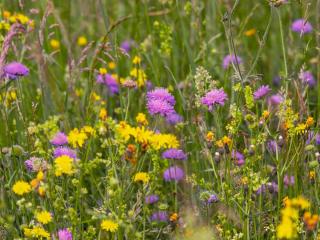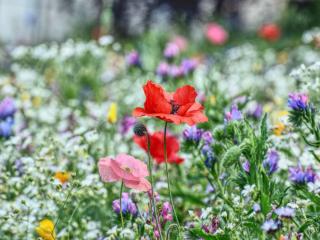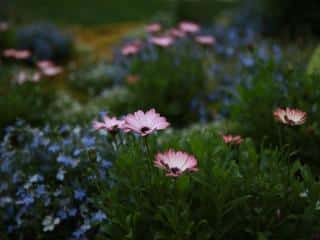

With a hint of the wild, a wildflower meadow undeniably has charming appeal! As vibrant as it is laid-back to care for, it embellishes poor soil with field flowers in varied hues. Learn how to create a flowering meadow in your urban or countryside garden!
Wildflower seed blends for “fallow” flowering meadows will always thrive, especially in poor soil. If the soil is too rich, it will favor foliage and grasses at the expense of flowers.

A good thing to know is that there are blends for shady areas and tree bases. The flowering meadow will cover the entire surface with its sparkling flowers! Use it to dress up a mound or to fill somewhat bland land parcels.
Here’s a fun way to turn a wildflower patch truly enjoyable: draw a winding path through it with your lawnmower to create a small refuge in a little clearing smack in the middle!
Sowing is done ideally in fall because winter will strengthen the seeds. Indeed, once it takes hold, all varieties will naturally reseed themselves when seeds fall in early autumn.
However, it also works to sow in spring between March and May.
There are many meadow flower mixes in garden centers and online.

Here are some ideal plants for a flower fallow:
If you’re starting with a dirt surface, all you need is a rake and some elbow grease to get rid of the weeds you don’t want in your meadow. Already have a lawn? No worries! Existing turf will make an excellent base for your meadow. Just give it a good scarify to expose some patches of soil. Then, only sow perennial flowers. Over time, they’ll overrun the grass even if you let it grow naturally.

Once seedlings have sprouted, no watering is necessary. Also, don’t use any fertilizer, it would do more harm than good for your idle plot. Maintenance consists only of two mowings a year. The first around July and the second in October. This matches the end of the flowering period when flowers have gone to seed and seeds have already fallen to the ground.
If you don’t mow, woody plants would take over after a few years.
Grab your brush cutter, then collect the stems to add to your compost or mulch. This is the only upkeep required by the wildflower meadow in return for several months of beautiful natural flowers.